Sao Paolo
Hello everybody! In this publication, we will very shortly be arriving at the last part of our amazing trip, and by then we'll have visited the cities of Bogotá, Medellín, Cali, Ipiales, Quito, Baños, Cuenca, Piura, Lima, Cusco, Puno, La Paz, Sucre and Santa Cruz de la Sierra; and I have given you some important pieces of advice for the most touristic or incredible places to see, such as: Machupichu, the Uyuni Saltflat, the Cathedral of Salt, the city Mitad del Mundo, Huacachina, the End of the World swing, and a few more things. All of these places are the most popular for Instagram photos and they're highly visited destinations. But, we're missing the best part of this trip. You'll have to put up with one more city before we talk about the final destination of my trip.
The Bolivian Border - Brazil
I took a bus from Santa Cruz to Sao Paolo and I was never really told how the transfer was going to work, and it turns out that the ticket I bought, included two bus tickets. One was from Santa Cruz to the city, or should I say village, of Puerto Suárez. The other was from Puerto Quijarro to Sao Paolo, but in Puerto Quijarro I had to take a van, taxi or another kind of transport that would take me to the second city. This cost was not included, and to be completely honest with you guys I felt quite worried. If I didn't have my savings I don't know how I would have been able to get there. Additionally, they never specified an exact timetable for the second bus, which is what stressed me out a lot and I was terrified about missing the next leg of my journey.
Fortunately (fortune was on my side for most of my trip), various people and I shared the cost of a taxi from the border and the cost didn't end up being too high. It was almost 8 in the morning and the border service hadn't started yet. We joined a queue, a pretty long queue, and minute after minute the service was deteriorating, there weren't many places to go, nor many shops where you could buy food or something to drink. I had nearly 15 kilos in my suitcase and the sun had started to come up. That queue felt like it lasted hours because there was no roof, nor anything to give anyone shade. The last thing you wanted was the sun stinging you on the head.

In the photo: The crossing on the Bolivian border.
I don't remember exactly if it was one or a little more than two hours that we had to wait to "exit" Bolivia, to then cross the border's bridge and to now "enter" Brazil. On several occasions I asked people from different countries how obligatory the border process really was, as it got really tedious and tiresome and it seemed as if there was no end. But, although you can get through without doing this procedure, if you walk across the border and some authoritative person or police agent revises your documents and realises that you've come into this country through illegal means, you could get yourself into some serious problems.
It's important to bear in mind that Brazil is one of the countries that would recommend, or it's nearly compulsory, to get the vaccination against yellow fever. What is yellow fever? It's basically a virus that's transmitted by mosquitoes. The illness can be lethal and its symptoms are fever, aching muscles, vomiting and fatigue. Regardless of whether it's obligatory or not to get this vaccination to enter some countries in South America, I decided not to think about it too much and go to a health centre in Mexico where there are a lot of medicines and vaccinations that, if they're not free, don't cost much. For example, to get this vaccination in a private centre cost me around $21. In a travellers clinic, I only paid $5 to have it done the same way. On the border, a woman came over to the queue and told us that in Brazilian border control, we required the vaccination to enter (something that never happened) and that you should raise your hand if you haven't had the jab, so that a doctor could give it to you then, and I'm not sure how many reales it cost (I think it was a quantity that equated to $10). I would recommend that you get this vaccination in whatever way possible, wherever you're going to travel. You can find out all of the possible viruses that exist there and get all the necessary vaccinations so that you don't end up suffering in a hospital for the rest of your trip.
But I over shared on this subject, but only because I don't want the same thing to happen to you, because I found myself with this constant uncertainty and doubt about what to do and how to act in that country. It was mainly due to the fact that I don't speak Portuguese, and the most "similar" that exists is Spanish, but it's still not the same language.
The whole migration process was long drawn out, but even then I arrived at the bus terminal and I had to wait for 2 more hours until the bus left (it left at 2pm). The heat was already very harsh, I went to get cups of icy water from the counter so many times, and I sat directly in front of the fan. It was a long wait, but what was even longer was the journey. The duration of the trip from the Bolivian border to Sao Paolo is nearly 22 hours long, so I would go through two whole days of travelling without visting any city. A new friend that I made in the queue at the border of Brazil told me to do a tour around Campo Grande where he had a great time, partied hard and did a lot of interesting things there (I'm not sure how truthful he was being). However, I had a few days of travelling left over and I wanted to make the most of being there, even if it would take up two of my days in Sao Paolo. Also, I had already bought the ticket and it would be a mess to be able to fix the situation.
A big view on the tour
Despite the countless hours of travelling, nowadays I can't even remember what was boring. I just remember the beautiful landscapes and the beautiful nature Brazil had. The quantity of vegetation there is is surprising, for thousands of kilometres the only thing I could see was the side of the motorway and trees, lakes and a mountain every now and then in the background. It gave me the impression that the country was almost completely flat.
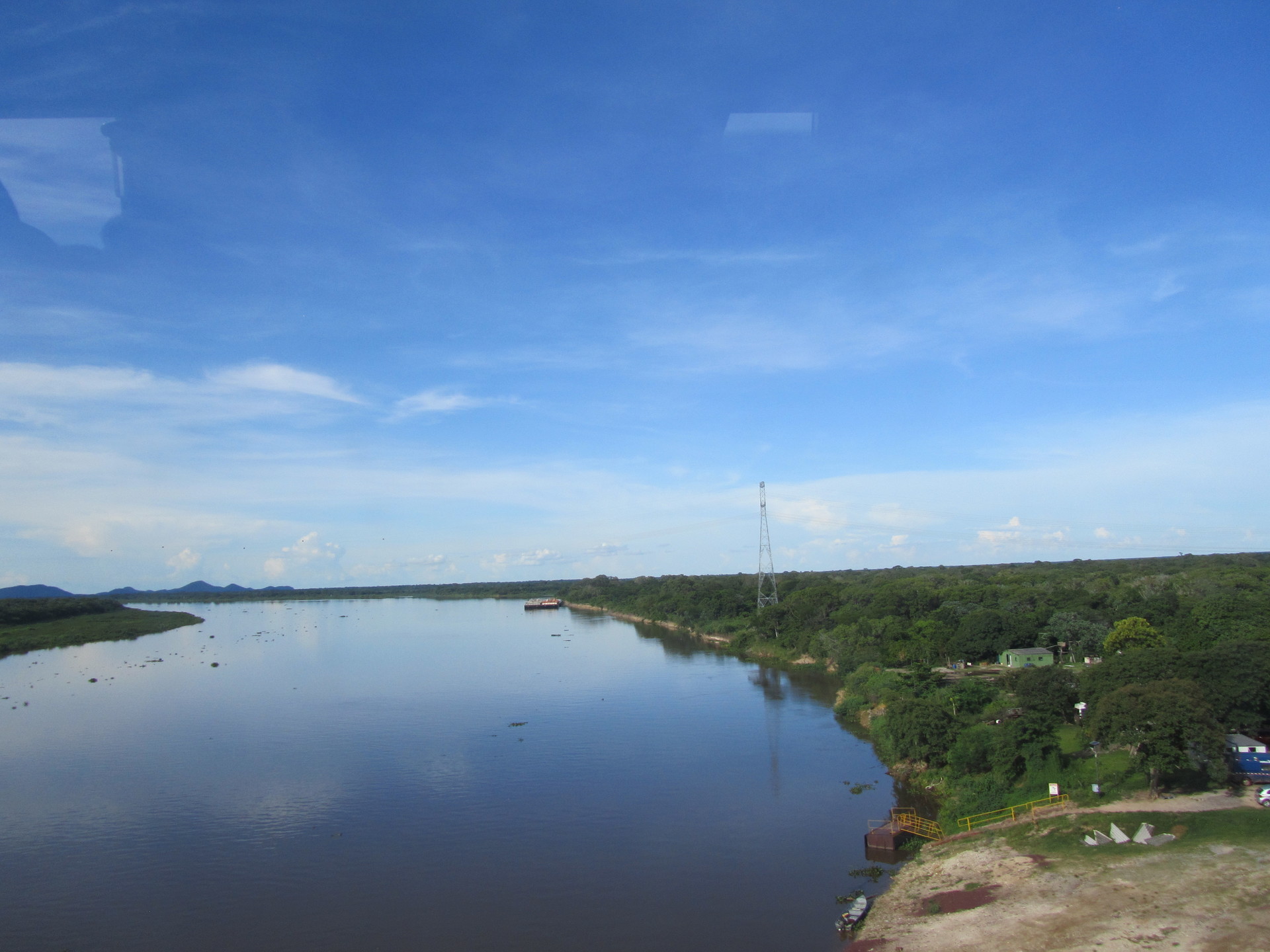
In the photo: a clear and clean sky, contrasting with the green of its nature.
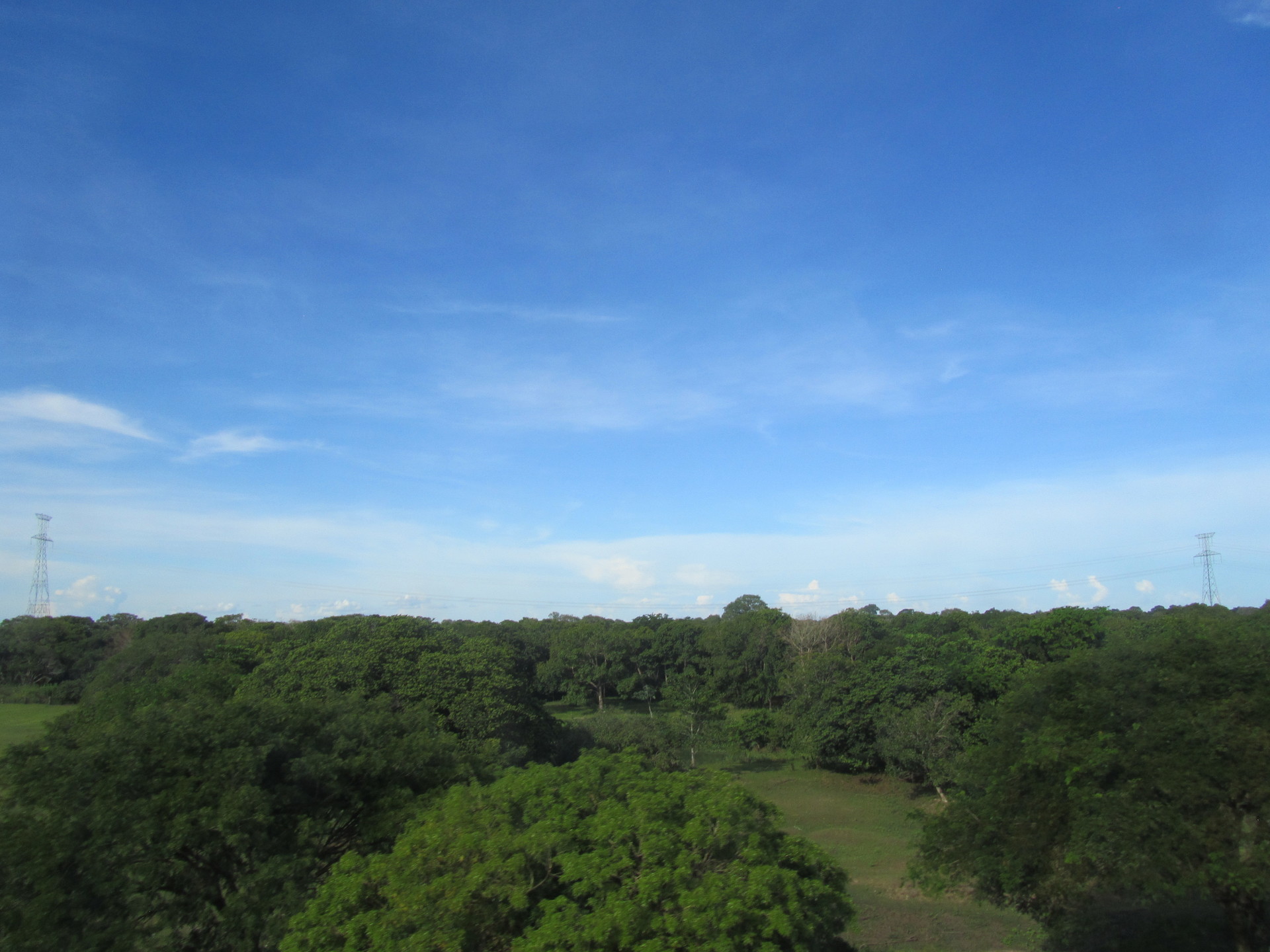
In the photo: more green everywhere, and in the distance everything seems to be at the same level.
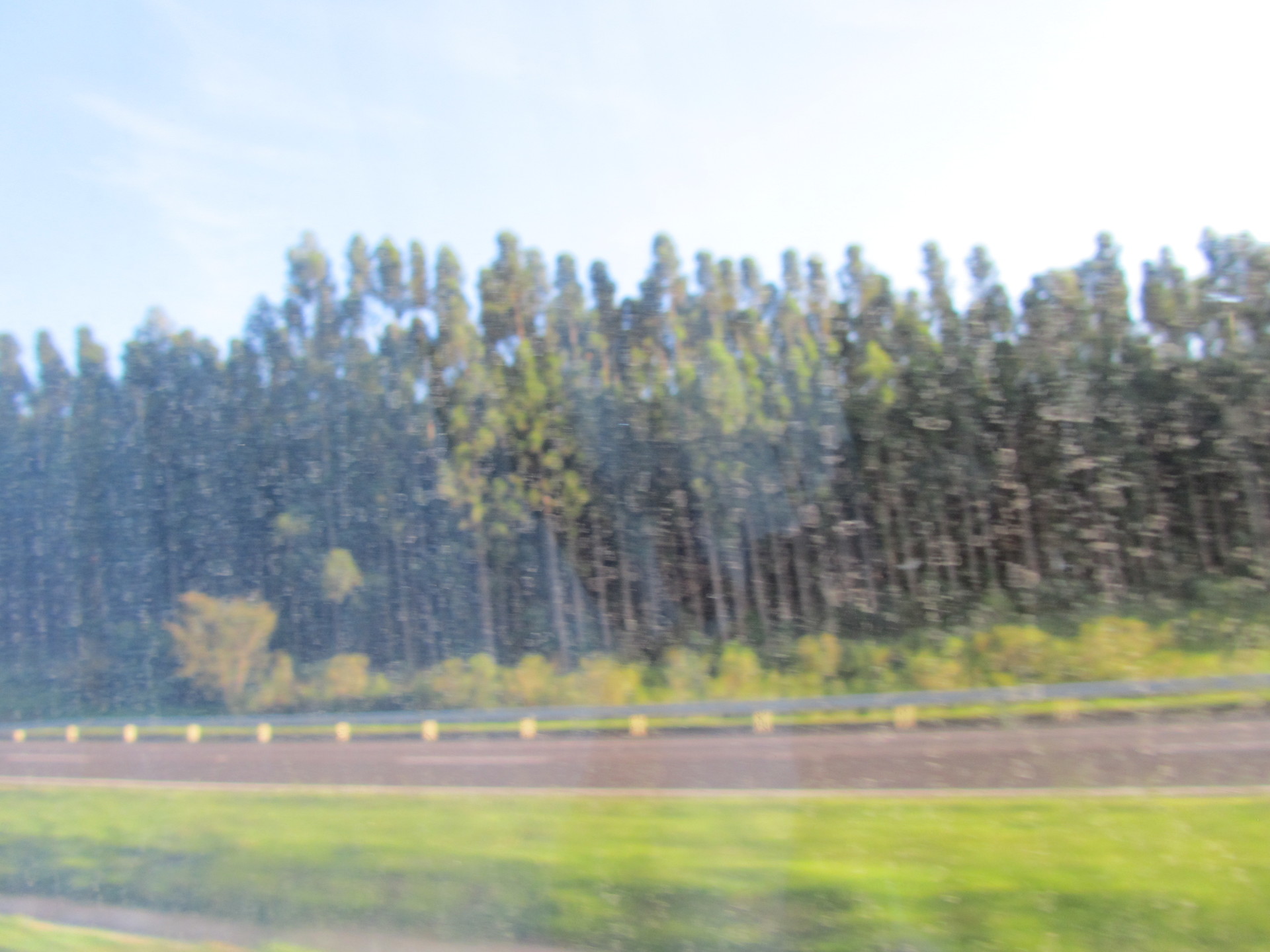
In the photo: a group of trees that I had never seen anything like in my life. They were so tall and so close to one another they seemed like an army. I'm sorry about the quality of the photo but as we were moving I couldn't take a photo very well.
Already in Sao Paolo
Sao Paolo is an incredibly enormous city. I knew that it was a very populated city, but I never visualised really how many people lived there. For those who have visited Mexico City, it's easy to compare it with that. The population of this Brazilian megalopolis is around 12 million people, and there are nearly 9 million in Mexico City. The difference is the size of its territory that the population is distributed across.
At the moment in which I arrived at the terminal, I felt completely disorientated and I had no idea what the first thing to do was and the terminal was a multimodal centre (where you can find various methods of transport in just one place). With so many options about where to go I was confused about where to begin. I hadn't looked up much about the city and it wasn't easy for me to communicate with people. The first thing I did was to look for a place to leave my suitcase so I could move freely around the city, but I didn't have any real idea about whether I was going to be able to stay there, or whether it was a better option to keep going directly to Rio de Janeiro where I was going to meet up with a group of friends.
Once a little bit lighter, I continued in my search for the place where all the metro lines come together and where you can see all the interesting places to visit are, so I went towards there and the destination was the Parque do Ibirapuera. I don't remember the route I took but I do remember that I have to walk for a while to be able to get there. It's an enormous park with museums, a planetarium, an auditorium and recreation areas. It was something like the Parque de Chapultepec in Mexico, but I didn't give myself until time to look around the whole thing nor take any photos. The majority of people I met, including Brazilians, made me scared of Brazil. They told me that it was not safe to walk around with a camera there. This is why my only memories of this city are only recorded in my head, and I regret this, especially because I remember that the park was really pretty, and there were loads of different interesting views and landscapes. For those lovers of architecture, you can find a work by the Brazilian architect, winner of the Pritzker, Oscar Niemeyer, which is the auditorium of Ibirapuera. It's a white triangle with a protruding red tongue of some sort, to welcome you here.
Avenida Paulista
As well as visting the Ibirapuera Park itself, I got to the know its surrounding areas as well and I took myself to another place that seemed to be a key destination to visit; Avenida Paulista. One of my friends that I was going to meet in Rio had informed me that he had ended up in Sao Paolo as well and he went to visit another friend of ours and he told me that we could stay with them. We agreed on a time and a place to meet, and I continued my trip.
You could half compare Avenida Paulista with the Reforma en la Ciudad in Mexico, and I say this because of the sheer quantity of towers, businesses and people that were circulating constantly, but without wanting to offend anyone. Reforma is a lot prettier, cleaner, more spacious, with more vegetation and more organised (something difficult to find in Mexico City).
Once you have arrived at the Avenida (with Metro line 2), you can decide to go and see the remaining 3 kilometres of the Avenida with the enormous skyscrapers, restaurants, businesses and museums. Or, you could visit the touristic places of interest such as the Sao Paolo Museum of Art, the Parque Trianon, the House of Roses or the Casper Libero foundation building which is what I did first. I walked the whole way down the Avenida to find a place to eat, and ironically I had Italian pasta. But, before you make any judgements I want to say that it's not that ironic, as Sao Paulo and Rio de Janeiro (the two most important cities in Brazil) are also the two most multicultural cities in the country. This means that it's such a mixture of cultures and characteristics, that it's difficult to define it as just Brazilian. We tend to find dark skinned, skinny people with frizzy or curly locks of hair, but also there are lighter-skinned people with light eyes and straight hair. They have a lot of Japanese characteristics because of the quantity of migrations that have happened here, also African traits because of the slaves the conquerers brought over (in this case, the Portuguese), and a lot of other nationalities.
Finally, I went through the non touristic streets and took the following photo:
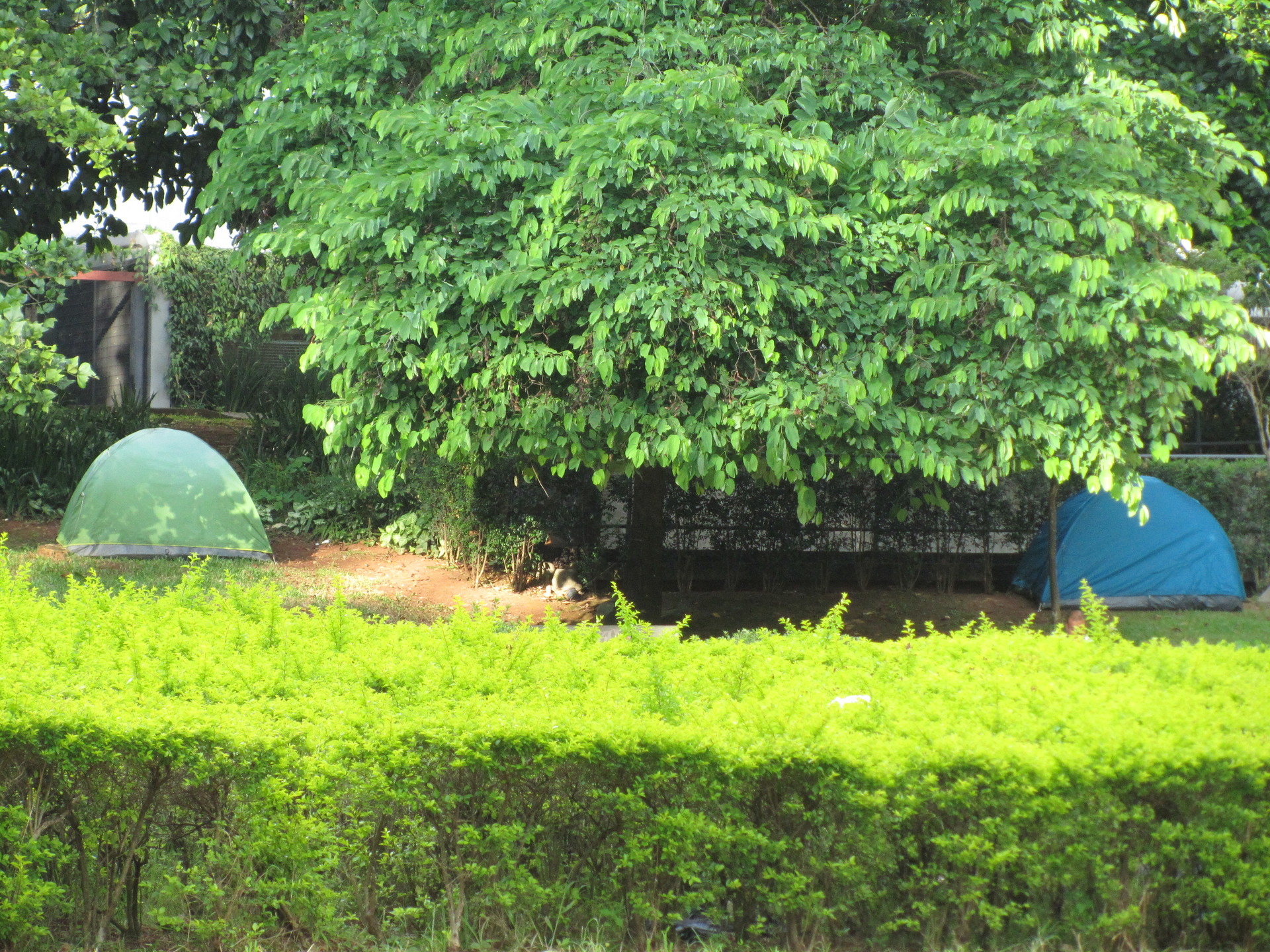
Two tents in a park in the middle of some buildings, the first question that sprung to mind was; are they tourists trying to save some money or are they homeless people living there day after day? Later on my curiosity grew deeper as I found out that the police don't have any regulations against this. In Mexico, if you do this the police will arrive quickly and ask that you pack up your things. I don't know what law it is exactly, or what motive they have to do this (use of public space maybe), but it intrigued me to see it in Sao Paolo.
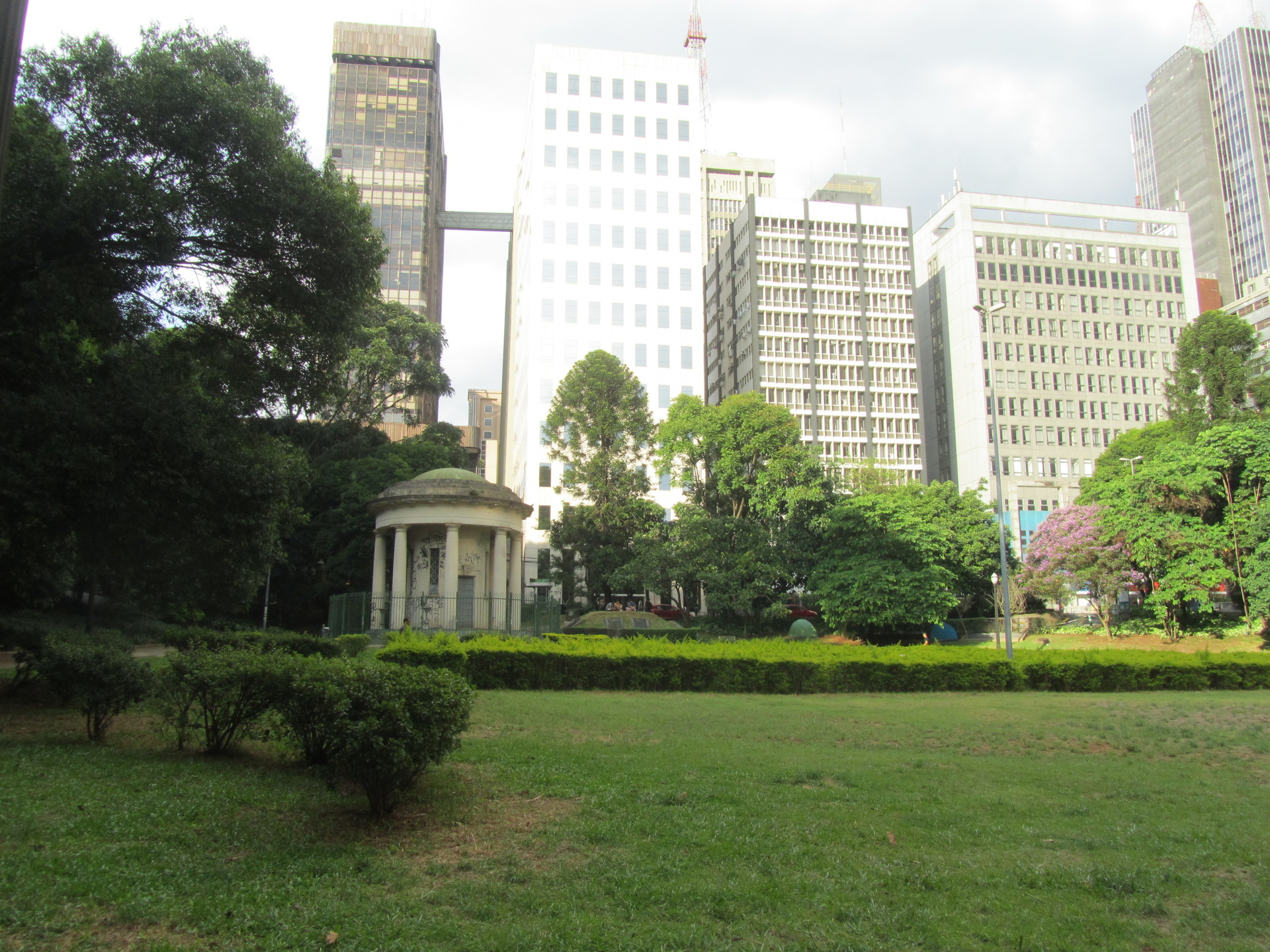
In the photograph: the park where the two tents were, you can see them between the lamppost and the small tower with pillars.
What else there is to do in Sao Paolo
Among other activities that you can do if you don't have much time like me, is to go to the City Museum of Art at night (or during the day), which is characterised by its enormous floating block that stands with the help of 4 enormous pillars. They leave a space underneath it that serves as a plaza where, during the night, groups of young people come to chat, listen to music, drink beer and smoke weed.
By day, you can visit its unmissable collections of paintings and sculptures catalogued amongst the most important ones in South America.
Another tour that I would recommend is going to the Football Museum, as many of you will know, Brazil is a country where children seem to carry a ball round with them from birth. It's in the Estadio Pacaembú and its diverse rooms that you can find photos and videos of all the important events and dates from football from Rio de Janeiro.
I've been told that a tour around the Liberdade neighbourhood, a Japanese neighbourhood filled with Asian charm, where at some moments you'll feel like you're not in Brazil anymore. I would recommend that you visit here during Asian festivals such as Chinese New Year so have a completely different experience.
The reunion
It was already 7pm, so I went to see one of my friends that I did an Italian exchange with who I hadn't seen for years. Finally there was also another friend of mine from the exchange that I hadn't expected to meet. I continued the rest of my journey with them towards an event that everyone should experience at least once in their lives... Rio de Janeiro Carnival.
Photo gallery
Content available in other languages
- Español: Sao Paulo
Want to have your own Erasmus blog?
If you are experiencing living abroad, you're an avid traveller or want to promote the city where you live... create your own blog and share your adventures!
I want to create my Erasmus blog! →





















Comments (0 comments)